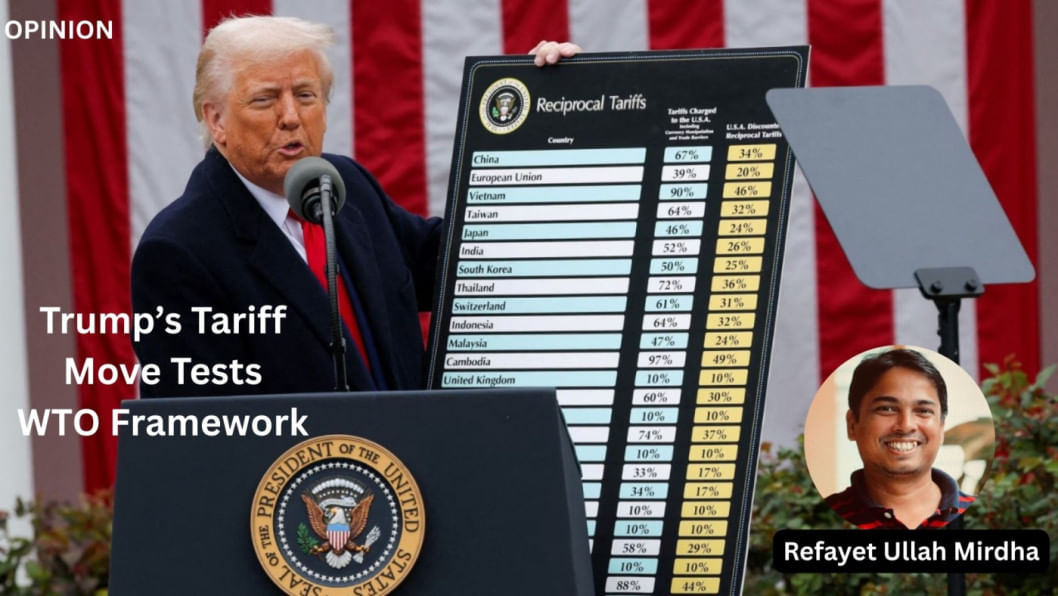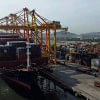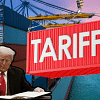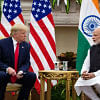How Trump’s reciprocal tariff challenged WTO’s multilateral trading system

The Trump administration started applying the reciprocal tariff on different countries from August 7 this year, after nearly five months of consultation.
With the implementation of the reciprocal tariff, the global trading system entered a new phase as the previous system was largely ignored in the reciprocal tariff framework.
Bangladesh has also been levied a 20 percent reciprocal tariff, which took the country's effective tariff rate (ETR) to 36.5 percent, including the 20 percent reciprocal tariff and the existing 16.5 percent tariff rate.
Bangladesh's tariff is much lower than India's at 50 percent with an ETR of 66.5 percent, and Vietnam's at 20 percent reciprocal tariff with an ETR of 36.5 percent.
So far, Bangladesh is in an advantageous position compared with other competing countries in the US market.
The Trump administration's reciprocal tariff is fixed unilaterally, as the concept of reciprocal tariff was not consulted with the countries concerned in any multilateral platform such as the World Trade Organisation (WTO).
However, Trump's reciprocal tariff is fundamentally opposed to the basic principles of the WTO, which was formed in 1995 in Singapore after years of consultations among global leaders.
The WTO was formed with the philosophy of easing global trade and ensuring equality in trade for smaller countries, as many states were struggling for minimum trade facilities after the Second World War.
After the Second World War, many countries—especially smaller nations such as Bangladesh, Nepal, Bhutan, African countries, and many Latin American nations—were suffering from a lack of trade facilities, as manufacturing and trading were mainly confined to the technology-rich Western world.
Because of the shortage of skilled workers and the higher cost of production, many Western countries started moving away from mass production in mills and factories, and poorer countries began receiving those industries as they were rich in labour.
Bangladesh is one of them. For instance, Bangladesh was one of the major beneficiaries of the quota system, and after a journey of nearly five decades, the country eventually turned into the second-largest apparel exporter after China.
This was possible because of new trading systems such as quotas and, consequently, the formation of the WTO, which helped to establish a rules-based trading system globally, benefitting all countries.
Even before the formation of the WTO, many countries such as the European Union (EU) launched Everything but Arms (EBA) under its Generalised Scheme of Preferences (GSP) in 1971, and the USA launched the GSP through amendments to its foreign trade rules in 1974.
As a member of the least developed countries (LDCs), Bangladesh has also benefited from these trading measures taken by developed and developing nations.
For instance, Bangladesh enjoys preferential trade benefits with 38 countries, and 73 percent of its total export value is LDC-induced.
By enjoying such trade benefits, Bangladesh eventually turned into a half-a-trillion-dollar economy and is on the way to becoming a trillion-dollar economy in the near future.
Like Bangladesh, many other countries have come out of extreme poverty and moved to middle-income or developing status due to the liberal tariff measures taken by developed and developing nations.
The liberal tariff regime has been helping countries grow as a favourable tax ecosystem has developed worldwide over the years through trade practices.
With Trump's reciprocal tariff in place, it is estimated that the average global tariff will cross 20 percent, as the US average tariff will climb to 20.1 percent—the highest level since the early 1910s (except for a brief spike earlier this year, after new duties took effect on August 7), according to data from the WTO and the International Monetary Fund (IMF).
The average tariff figure of the USA was far lower at 2.4 percent when President Donald Trump took office on January 20, 2017, and this rate remained in effect until the new tariff came into place on August 7.
Bangladesh is called one of the most protected economies because of its higher average duty at 28 percent, and many trading partners have been asking Bangladesh to liberalise its economy by reforming the current tariff regime.
Bangladesh has been working to liberalise its tariff regime, as the country is scheduled to graduate from LDC to developing nation status in November next year.
Why Trump Imposed the Reciprocal Tariff
President Trump imposed the reciprocal tariff mainly as a tool for weaponising trade to fulfil his dream of "Make America Great Again" (MAGA), his electoral pledge.
But this time, he weaponised tariffs as the tool for MAGA. Usually, tariff issues are widely consulted in the WTO platform, but President Trump imposed the tariff arbitrarily under special powers.
First, he suspended the operations of USAID, which indicates that Trump does not believe in aid but in trade.
In his tariff negotiation, Trump sidelined poor countries and targeted developed and developing nations with higher tariffs.
The Trump administration is trying to reduce the $1.3 trillion annual trade deficit by imposing higher tariffs on major trading partners.
The rise of China is a major concern for the USA and for Trump's dream of MAGA.
China is becoming a major global power, both economically and politically, and is spreading its Belt and Road Initiative (BRI), under which China has been doing business and investing in different countries.
With China's increasing involvement in global affairs—be it in finance, investment, strategy, or commerce—the dream of MAGA is narrowing.
President Trump also wants the re-establishment of industrial and manufacturing plants in the USA, particularly in sectors such as semiconductors and microchips, which are higher in price but require fewer workers and less working time.
The profit is higher in the production of these small but expensive goods. So, President Trump proposed a 145 percent tariff hike on China, which is still under negotiation.
Has Trump Followed the WTO Rules?
Most of the tariff rates were fixed by the Trump administration, as major trading partners did not sign the deal. For instance, India and Brazil did not sign.
Most countries wanted to negotiate the deals under the WTO's multilateral and widely practised Most Favoured Nation (MFN) basis to make tariff rates more participatory.
But the Trump administration negotiated tariffs unilaterally and forced many countries either to purchase more American goods or to commit more foreign investment in the USA.
For instance, Trump imposed a 15 percent tariff on Korea as the country agreed to provide duty facilities for US goods and committed to investing in the USA.
South Korea agreed to invest $350 billion in the United States in projects selected by Trump and to purchase energy products worth $100 billion, according to Reuters.
The new rate kicks in as the two countries remain at loggerheads over Japan's $550 billion investment pledge made as part of the trade deal, when and if auto tariffs will be lowered, and even the terms and conditions of the reciprocal tariff, according to The Japan Times.
Similarly, many countries that agreed to the reciprocal tariff also pledged to buy more US goods and to provide duty facilities for American goods.
These tariff rates may not be sustainable, as some countries will face serious trouble in their businesses. Even US retailers and brands may face difficulties, as they are not manufacturers of garments, accessories, and mobile gadgets.
They need to import these goods from other countries to sell to end consumers. If duties are high, prices will also go up in the US market, and consumers will have to pay more.

 For all latest news, follow The Daily Star's Google News channel.
For all latest news, follow The Daily Star's Google News channel. 







Comments